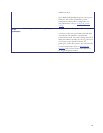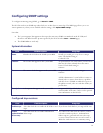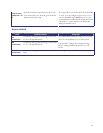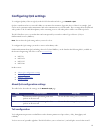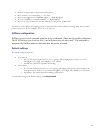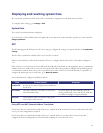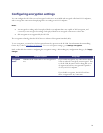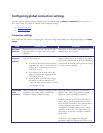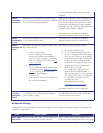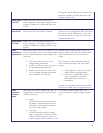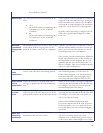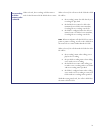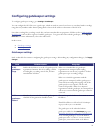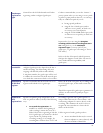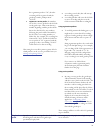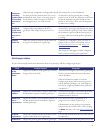
88
to restrict transmitted video resolutions for all
endpoints.
Default
bandwidth
from IP VCR
Identifies the network capacity (measured in bits
per second) used by the media channels established
by the IP VCR to a single participant.
When the IP VCR makes a call to an endpoint, the
IP VCR chooses the maximum bandwidth that is
allowed to be used for the media channels which
comprise that call. This field sets that maximum
bandwidth, and is the total bandwidth of the audio
channel and video channel combined.
This setting can be overridden by individual
endpoints' Preferred bandwidth from IP VCR values.
Default
bandwidth to
IP VCR
Sets the bandwidth that the IP VCR will advertise
to the endpoint when it calls it.
This setting can be overridden by individual
endpoints' Preferred bandwidth to IP VCR values.
Default
incoming call
action
Determines what the user experience will be when
they call the IP VCR.
• Connect to auto attendant
The user will be presented with the
default auto attendant from which they
may view stored recordings or potentially
make a recording of the session (see
Using
an auto attendant).
• Record session
The user will be presented with the video
recording screen (see
Using the recording
console), allowing them to record the
video from their endpoint.
• Disconnect caller
Users may not call the IP VCR in this way;
the call will be terminated.
The default call action is applied to calls to:
• the IP address of the IP VCR
• to E.164 numbers that do not match a
specific recording or folder ID (using the
service prefix). In this case, if the default
action is Record session, the recording will
be made into the root folder of the IP
VCR and the recording will be given the
numbers that follow the dialed service
prefix as the recording ID.
For example if the registered service
prefix is 33 and the dialed number is
331234 (and 1234 does not already match
a recording or folder ID) a recording will
be made in the root folder with the
recording ID: 1234
For more information refer to
Configuring gatekeeper settings.
Recording a session uses one recording port.
Show
recording
participant
names
Controls whether participant names will be
overlaid onto the recorded video when making a
point to point recording.
You may want to disable the overlaying of names
by the IP VCR if the devices in the call add their
own text to their video streams.
Advanced settings
You typically only need to modify these advanced settings if you are working with a support engineer or setting up more
complicated configurations.
Field Field description Usage tips
Audio codecs
from IP VCR
Restricts the IP VCR's choice of audio codecs to be
used for receiving audio from the endpoints.
When communicating with an endpoint, the IP
VCR receives a list of supported audio codecs from



